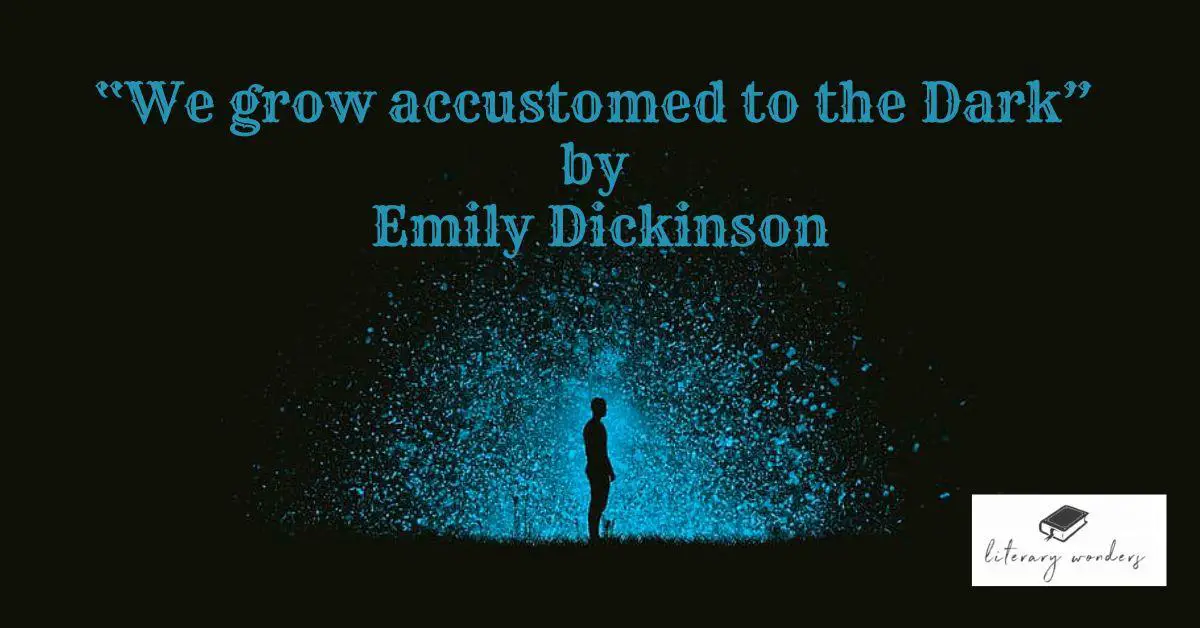Introduction
“We Grow Accustomed to the Dark” by Emily Dickenson, a remarkable American poet, is an engaging poem. It speaks about the way we as humans grow up in this world. At first, we get kind support in life until a day comes when the guidance departs, and we stand in the middle of nowhere. Unfortunately, this drastic shift shakes us for a moment; it gradually sets our vision toward the constantly haunting darkness. Once we are fixated on the dark, we start losing hope in life. However, two types of people emerge from this point; one who struggles hard and gives this situation a hard blow. Yet, simultaneously, the second type of people gets accustomed to this dark phase and remains caught in the same drastic fortune for good.
“We Grow Accustomed to the Dark” Major Themes
Misery, the bitter realities of life, and hope are the major themes of the poem, “We Grow Accustomed to the Dark”. The speaker tries to shed light on the harsh realities of this life. She argues that initially, people spend life happily, depending upon the support they have with them. However, one day they reach a point when all lights are put away, and people are forced to find the light themselves. However, this utterly drastic shift gives birth to two streams; we see victorious and losers emerging from the same catastrophic situation. Through this simple text, the speaker conveys a profound lesson that it is human nature. She argues that man hesitates to get into trouble, but once he locks his horns into something challenging, he manages to push himself out of the misery.
Poetic and Literary Devices Used in “We Grow Accustomed to the Dark”
To heighten the impact of her words, the writer has beautifully inserted various powerful poetic elements into this poem. This five stanza poem exhibits symbolism, imagery, metaphor, end rhyme, and different other rhetoric devices. The writer has divided the poem into equal-length stanzas that carry much-intended use of dashes to convey her words effectively. Similarly, the images such as “Neighbor holds the Lamp” and “The Bravest – grope a little” clearly make us imagine human nature’s defined patterns. Although god has created us superior, we sometimes lack the courage to identify our real strength and give up on life.
Conclusion
To sum up, it can be aptly stated that life never runs on the same path; we have to face various situations that may not appear engrossing to us but we have to swallow their bitter taste. It is obvious that every living person has to undergo various challenges in life. However, these challenges polishes some people but for some they stand fatal and unbearable.
See Also:
I died for Beauty but was Scarce by Emily Dickinson Analysis

